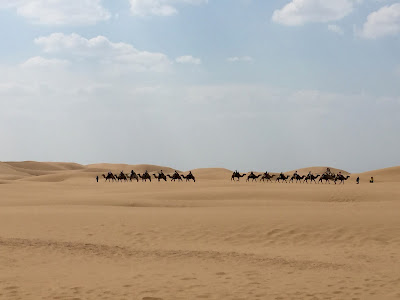 |
| All of the volunteer teachers (students from Yale, Peking, Shanghai Jiao Tong, and Hong Kong University) ~Play spot the white girl~ |
 |
| We all went to Qingyuan to teach for two weeks |
 |
| The school where we taught rising 8th and 9th grade students from the town and nearby villages; some of their parents worked at the chopstick factory across the street |
 |
| View from the classroom; the Chinese government built the apartments along the river for poor rural immigrants |
 |
| As per the layout of most schools in China, the hallways are all outdoors |
 |
| I taught English class to 30 8th graders and 30 9th graders everyday |
 |
| Zora and Alexis (I got to give them all English names; Zora wanted a name that started with X, but Z was the best I could do) |
 |
| Playing board games with my students (using Li Laoshi's techniques!) |
 |
| Daily afternoon activities; over 200 Chinese students now know how to play Heads Up Seven Up |
 |
| Playing pickup with some other teachers and students |
 |
| The one stoplight in our part of town; it was a 20 minute walk to the school everyday, but my students would always call out to me as they passed me on bikes |
 |
| My group of fellow teachers with whom I worked most closely during the program |
 |
| Overflowing a pedi-cab (a tin box attached to a bicycle or moped); I'm hanging out the side |
The Chinese education is seen as the reverse of the American when it comes to intensity. American students experience more and more pressure as their educational careers go on, with college being the most important. However, in China, college is much more relaxed than younger grades. For instance, Chinese middle school is quite intense. Class goes from 7:30 am to 9 pm, although they do have a two and a half hour break for lunch where everyone walks/rides the public bus/fits four on a bike to go home for the break. Also a huge difference between China and America's view on education is the role that parents and the home play in children's education. For Chinese families, they see it as completely the school's duty to educate their kids. Why kids stay at school until 9 pm is because they are supposed to do most of their homework at school. Chinese kids often take a lot of extra classes too, especially if they have dreams of studying in the States. American parents are also way more involved in early education, a concept that almost doesn't exist for Chinese. Americans believe it's the parents' duty to cultivate their children's interest in learning even before they start school, by reading to them, playing Baby Mozart, etc.
 |
| People dancing together in the park by the river as night falls |
 |
| Night markets starting to open |
 |
| Eating Qingyuan specialities with a student's family |
 |
| The morning of our departure our students all brought each of their teachers breakfast and parting gifts (and then started crying) |
Link to Chinese article about the program: http://mp.weixin.qq.com/s?__biz=MjM5OTUxMzI3MQ==&mid=209390444&idx=1&sn=b371646b82124f0c536c165233a8fb18&scene=5&srcid=XEsTagfG9U14DsPyAvZg#rd




















































